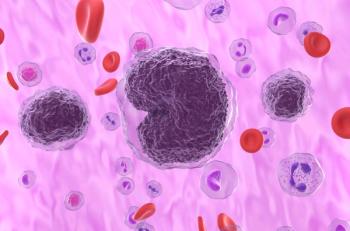
New Review Outlines Potential Role of Macrophages in SLE Development, Treatment
New evidence suggests macrophage regulation could be an important area of inquiry in systemic lupus erythematosus, but the research is in its early stages.
Although
The review article was
Corresponding author Xiaochuan Wu, of China’s Central South University, and colleagues noted that macrophages are a key component of the immune system. The cells “polarize” into different phenotypes, eventually carrying out a variety of functions, based on their microenvironment. Historically, macrophages have been split into 2 categories (M1 and M2) based on their functions, but Wu and colleagues said such a binary distinction has been rendered “obsolete” by new research suggesting macrophages are more complicated.
“Indeed, accumulating evidence affirms the existence of other macrophage populations in vivo and reveals different behaviors between in vitro and in vivo macrophages,” the authors wrote. “More interestingly, it is suggested that macrophages express different genes in vitro and in vivo.”
Moreover, the plasticity of these cells allows them to change phenotypes, the authors said, essentially “re-polarizing” based on environmental factors.
“In diseases like SLE, where deregulation of macrophage phenotypes is known to play a pathogenic role, this functional adaptability has a tremendous therapeutic value because it could be exploited to restore the balance between different macrophage subtypes,” the authors wrote.
After outlining different types of macrophages, the authors turned their attention to macrophage activation syndrome (MAS), a rare complication of SLE and other diseases. The investigators said it is unclear exactly what causes MAS in SLE, but they said it appears to coincide in many cases with infection or SLE flares.
“When infection cannot be eliminated, the immune system becomes inappropriately stimulated, leading to hyperinflammation via an uncontrolled release of cytokines from immune cells such as macrophages,” they wrote. “The resulting cytokine storm is believed to be responsible for the development of MAS.”
The authors explained a number of mechanisms and biomarkers that may be associated with MAS in SLE, but they said most of the existing literature has been small in scope, limiting its generalizability.
The investigators said the potential role of macrophages in SLE has enabled new potential therapeutic pathways. For instance, tuberous sclerosis complex 1 (TSC1), a macrophage polarization regulator, has been shown to control macrophage polarization in such a way that could potentially prevent autoimmune diseases. However, the authors said there is not yet any research examining the therapy’s potential at preventing specific autoimmune diseases like SLE.
The macrolide antibiotic azithromycin, meanwhile, has been found to ease lupus flares by regulating certain types of macrophages, the authors noted. However, they added that the drug can yield adverse effects and more research is warranted.
In their conclusion, Wu and colleagues looked ahead at the research they say will be needed to fully exploit the potential role of macrophages in SLE. To start with, they said, it is still not clear whether macrophage deregulation is a cause or an effect of SLE. It is also not known whether addressing macrophage deregulation might lead to other unwanted effects, given the systemic nature of the disease.
“Currently, various new and exciting macrophages-based therapeutic strategies are being exploited, and they appear to be promising,” the authors said. “These therapeutic approaches bring a glimmer of hope for the lupus community as they provide us with a new pathway toward the treatment of SLE.”
However, there is still work to be done before those hopes can be realized, they concluded.
Reference:
Ahamada MM, Jia Y, Wu X. Macrophage polarization and plasticity in systemic lupus erythematosus. Front Immunol. Published online December 20, 2021. doi:10.3389/fimmu.2021.734008
Newsletter
Stay ahead of policy, cost, and value—subscribe to AJMC for expert insights at the intersection of clinical care and health economics.













































